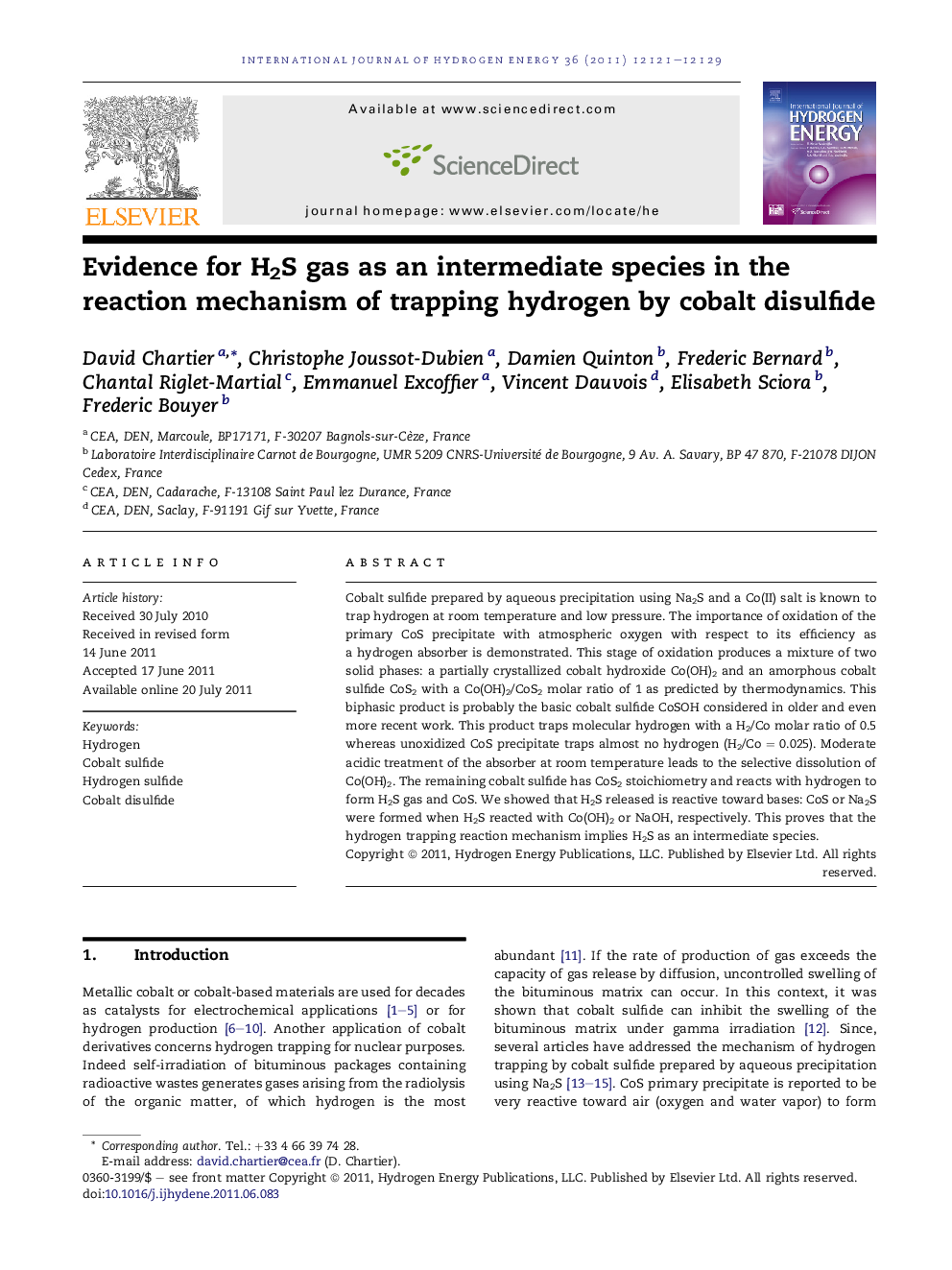| Article ID | Journal | Published Year | Pages | File Type |
|---|---|---|---|---|
| 1282412 | International Journal of Hydrogen Energy | 2011 | 9 Pages |
Cobalt sulfide prepared by aqueous precipitation using Na2S and a Co(II) salt is known to trap hydrogen at room temperature and low pressure. The importance of oxidation of the primary CoS precipitate with atmospheric oxygen with respect to its efficiency as a hydrogen absorber is demonstrated. This stage of oxidation produces a mixture of two solid phases: a partially crystallized cobalt hydroxide Co(OH)2 and an amorphous cobalt sulfide CoS2 with a Co(OH)2/CoS2 molar ratio of 1 as predicted by thermodynamics. This biphasic product is probably the basic cobalt sulfide CoSOH considered in older and even more recent work. This product traps molecular hydrogen with a H2/Co molar ratio of 0.5 whereas unoxidized CoS precipitate traps almost no hydrogen (H2/Co = 0.025). Moderate acidic treatment of the absorber at room temperature leads to the selective dissolution of Co(OH)2. The remaining cobalt sulfide has CoS2 stoichiometry and reacts with hydrogen to form H2S gas and CoS. We showed that H2S released is reactive toward bases: CoS or Na2S were formed when H2S reacted with Co(OH)2 or NaOH, respectively. This proves that the hydrogen trapping reaction mechanism implies H2S as an intermediate species.
► CoS precipitate has been oxidized by oxygen to be an efficient hydrogen absorber. ► The hydrogen absorber is a mix of partially crystallized Co(OH)2 and amorphous CoS2. ► In the presence of H2, the absorber produces CoS and Co9S8. ► Amorphous CoS2 extracted from the absorber reacts with hydrogen to form H2S. ► H2S gas is an intermediate species in the reaction mechanism of trapping hydrogen.
